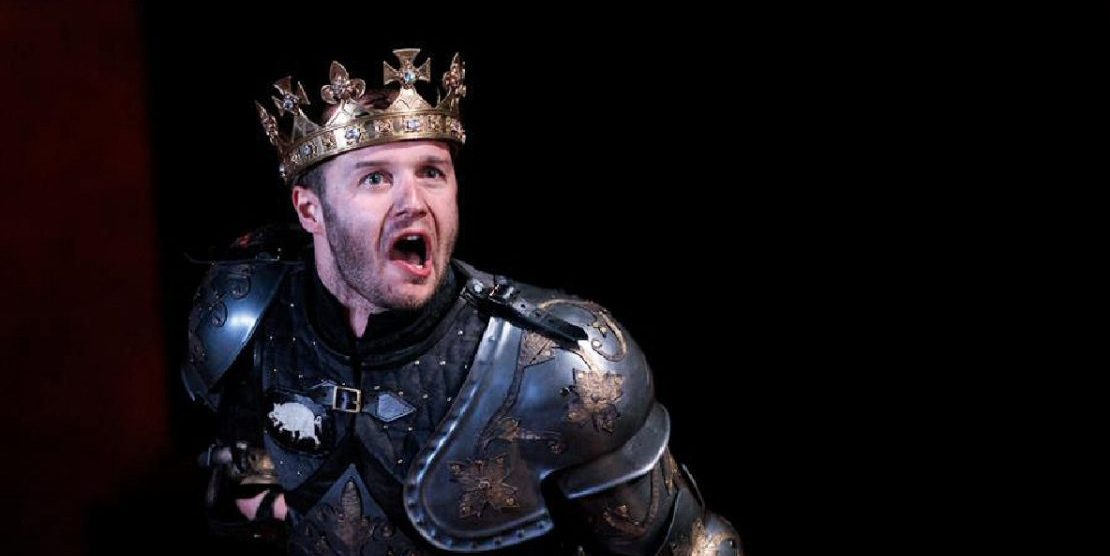Richard III is a play about the desire to achieve and retain power for its own sake. At no point is the exercise of that power what matters to the protagonists – except in the tyranny that becomes essential for its retention. It is in this core theme that this production finds its timeliness. From Russia and Vladimir Putin’s invasion of Ukraine to the state of the ruling British Conservative party these themes have true echoes throughout that are nodded to in interesting and mostly successful ways.
The stage is mainly bare save for a full-size replica of the cenotaph. This use of an iconic war memorial deftly nods to the fact that the action is set during ongoing action of wars fought over previous plays (the text refers to an action from Shakespeare’s previous history plays Henry VI 1,2,3), There have already been many wars and bloodshed throughout the War of the Roses and it is into this world we enter – a world where the stage walls are painted blood red throughout. Bloodshed and power struggle is the world these characters have long inhabited and while some are ready to move on, others, steeped in bloodshed and violence crave either revenge or power still.
The other thing the use of the Cenotaph does is place us – metaphorically at least – at Downing Street – where the current incumbent is often seen as all too willing to do anything and sacrifice anyone to first gain then cling on to power. He too was once lauded by crowds while feigning reluctance. This set design allows the audience to make the obvious connections with current politics without making it too overt or unsubtle.
In this production – and for the first time in RSC history – the famously ‘deformed’ Richard is played by an actor with a disability. Arthur Hughes was born with Radial Dysplasia – which means that his right arm is significantly shorter than his left and his wrist is bent towards his body. It is a different condition than that of Richard III (who had Scoliosis and thus a bent spine) but it does bring a real frisson to the enactment of the character’s self-loathing and his introduction of himself and his condition at the start of the play.
A lesser actor might have relied on this to play a traditional solely villainous Richard but Hughes’s deft and compelling performance imbues Richard with the charisma that helps us to understand why so many fall for him and follow him in the first place. Richard is a villain, but he is also a leader.
Many productions are following the recent fad of using handheld cameras to offer the audience a close-up of the action on stage at certain points and this is no different. When Richmond makes his speech rallying his troops he is filmed in shaky vision captured flanked by his men. An inspiring and active soldier leader. I was immediately reminded of the videos of Volodymyr Zelensky from the frontlines of Ukraine. Sadly though this was undercut by the production using the same technique (though unflanked) for Richard’s speech. How much more powerful a metaphor would this have been were this a shaky handcam Vs an officially televised address?
The only other aspect of the show that didn’t work for me was the role of Margaret (Minnie Gale) – the heartbroken and grieving widow – presumably sent mad in her grief. This was madness in its most full and overblown depiction and, as such, grated against the far more subtle nuances of all the other characters in a way that took me further out of the action than deeper into it.
Overall this is a polished production that manages to bring contemporary themes to a much-used classic without smacking you over the head with them too obviously. It is a timeless play ripe for the times in which we live and as my first time seeing this particular work, I was thrilled by its slick and pacey production.

